Car Seat and Child Restraint Laws
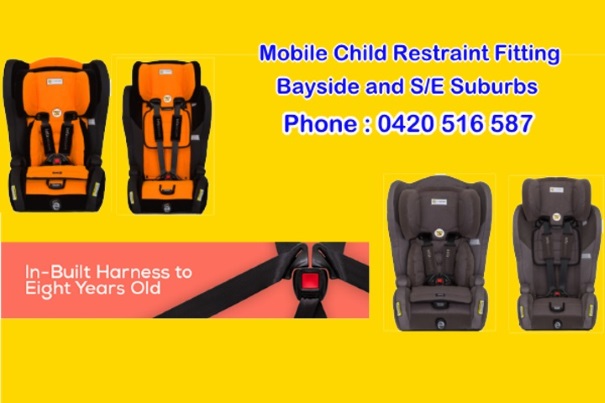
In November 2009, national car restraint laws came into affect regarding child restraints. Child restraint fitting now offer a service where we will perform an audit of your child restraint to check and ensure that it is compliant with the current requirements (small fee).
Specifically, the law requires children –
- Up to the age of six months to be restrained in a rearward facing child restraint (e.g. infant capsule);
- From six months until the age of four to be restrained in either a rearward or forward facing child restraint (e.g. child safety seat); and
- From four years until the age of eight to be restrained in either a forward facing child restraint or booster seat restrained by a correctly adjusted and fastened seatbelt or child safety harness.
- Children up to four years of age must be restrained in the rear of the vehicle (where the vehicle has two or more rows of seats);
By specifying the type of restraint to be used at different ages and where children must be seated in a vehicle, the new laws will reduce the risk of injury caused by the use of unsuitable restraints for a child’s size.
Type A Car Seat / Child Restraint
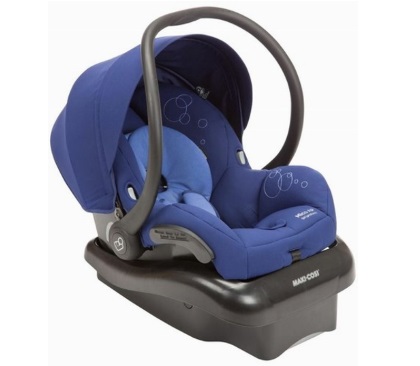
The A type Child restraint is a restraint which is intended for newborns and child who cannot sit up without assistance and the restraint has built-in 6 point harness, where the child faces the rear of the car. The Law stipulates that children must be rear facing until they are at least 6 months, however many parents feel 6 months is too young to forward face and keep their children with extended rear facing car seats (crash tested for and average 30 month child)
The A type child restraint is further divided into 3 seperate categories these are A1, A2 and A4 type baby car seats.
Additionally an A type baby car seat can be a Babp Capsule / Carrier (Only Rear facing)or a Convertible car seat (changes from rear facing to forward facing)
Type A1 for children up to 70cm tall (approx 6-9 months)
The A1 type baby car seat is always a Baby capsule / baby carrier. All Child restraints manufactured after the approval of the 2010 Australian Standards has height markers, prior to this the seats are weight based.
Call 0478 522 783 for your Type A Child restraint installation.
Some Restraints have been Designed with premmies in mind and have and extra low harness position and usually 2 buckle positions.
The advantage of the Baby Capsule / A1 Baby Carseat is that it can be taken in and out of the car by clipping and un-clipping the baby capsule from the base, plus with the appropriate adapters it can easily clip onto your pram, all without disturbing your babies sleep.
examples of an A1 type capsule include
Baby Car Seat fitting in Mentone is just a phone call away to get you child restraint fitted by an
ACRI Accredited Professional Child restraint technician
. Call 0478 522 783For Your baby Capsule Hire and baby capsule installation CALL 0478 522 783.
Type A2 for children up to 80cm tall (approx 12 months), and a new category Type A4, for children up to 2-3 years of age.
The A2 type baby car seat can also a Baby capsule / baby carrier but also a A2/B convertible car seat. As a rule of thumb, Baby capsules are not a2 as the weight of the baby and capsule is simple too heavy for parents to lift in and out of the car.
Call 0478 522 783 for your A2 Child restraint installation.
Generally most convertible child restraints have a lot of padding to take into account smaller babies and premmies. This padding is usually removed once the babies get close to the first height marker.
The advantage of the Baby Capsule / A1 Baby Carseat is that it can be taken in and out of the car by clipping and un-clipping the baby capsule from the base, plus with the appropriate adapters it can easily clip onto your pram, all without disturbing your babies sleep
examples of an A2 type baby car seat include, the Infa Secure Luxi (type A/B/E - lasts till 8 years of age), The Safe n Sound Meridian, Safe n Sound Platinum and Maxi Cosi Hera.
It should be noted that most Safe n Sound / Britax A2/B car seats have been upgrade to an A4 type Child restraint.
Baby Car Seat fitting in Mentone is just a phone call away to get you child restraint fitted by an
ACRI Accredited Professional Child restraint technician
. Call 0478 522 783For Your convertible child restraint installation CALL 0478 522 783.
Type A4 is a new category introduced in September 2014 with the new Australian Standards, for children up to 2-3 years (30 months) of age.
The A4 type baby car seat is only a A4/B convertible car seat. The A4 extended rear facing car seat / restraint has three height markers. The First height marker indicates the minimum height a child must be before they can be forward facing, but can kept rear facing in an A4. The Second height marker is where you must turn your child around to forward facing position (average 30 months of age).
Call 0478 522 783 for your A4 Baby Car Seat installation.
Generally most convertible child restraints have a lot of padding to take into account smaller babies and premmies. This padding is usually removed once the babies get close to the first height marker.
At the time of writing, Maxi Cosi had released their A4 child restraint without being certified from SAI GLOBAL and all maxi Cosi Seat had to be recalled. Infa Secure still had not released their A4 leaving only Britax with a Certified A4 child restraint.
examples of an A4 baby car sea (at the time of writing) include, The Safe n Sound Meridian, Safe n Sound Platinum.
A4 Car Seat fitting in Mentone is just a phone call away to get you child restraint fitted by an
ACRI A4 Accredited Professional Child restraint technician
. Call 0478 522 783Type B Car Seat / Child Restraint
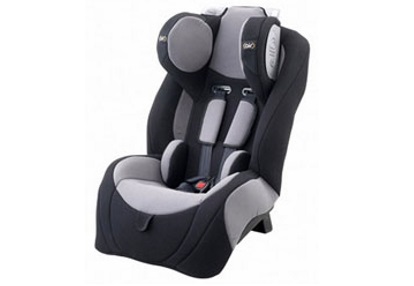
For children who have outgrown their rear facing restraint up until at least 4 years of age, with a built-in 5 or 6 point harness where the child faces the front of the car. Type B in the Australian Standard.
NB. Forward Facing restraints, Type B, fit most children up to at least 4 years of age. A new forward-facing restraint with an inbuilt harness, Type G, is now available which can be used up to approximately 8 years of age.
There are some car seats for infants that are defined as only a B type child restraint such as the maxi cosi complete air (now no longer manufactured).
It is important to recognise that the Type B child restraint is a forward facing child restraint and you should not face your child forward before they are strong enough.
In most cases the type B child restraint with also be a type A child restraint making the convertible car seat a type A2/B restraint. Two of the most popular AB child restraints are the Maxi Cosi Hera and the Maxi Cosi Euro, these car seats were recalled in 2015 due to a number of issues, of primary concerns was that Maxi Cosi tried to portray the number of faulty cases was limited and finally admitted there was a fault with the cover design, read more about the maxi cosi recall online.
Examples of Type A/B car seats include the Britax Meridian, Britax Platinum, and Infa Kompressor and Luxi.
The Rule of Thumb is "Stay Rear for a Year"
Type E Car Seat / Child Restraint
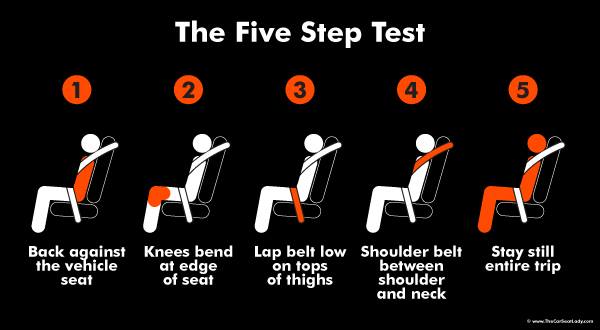
For children who have outgrown their forward facing restraint up to at least 8-10 years of age, to position the lap and sash belts safely. Use of an add-on harness is not recommended. Type E in the Australian Standard.
NB. Booster Cushions are boosters without the back and side wings that protect the child's head. Booster cushions are no longer sold in stores and it is not recommended to use booster cushions as they do not provide any side protection or back support. Booster cushions in cars such as the volvo xc60 and xc90 can still be used.
Boosters seats come in two flavours; Tethered and Un-Tethered. Tethering refers to the booster seat having an upper tether strap connected to an anchor point.
Untethered booster seats are recommended only for occasional use and are suitable for grandparents / carers ho do not normally have the children in their car. It should be noted it is better to use a un-tethered booster than a Booster cushion.
Type G Car Seat / Child Restraint

The G Type Child restraint was introduced into the Australian Standards in September 2014. The Child restraint is a forward facing car seat from 6 months of age to approximately 8 years of age.
As with all forward facing child restraints do not turn your child from rear facing to forward facing until they are of the correct height.
The G type car seat is a safer alternative to any type of booster seat as your child will be using the internal harness from 6 months to 8 years of age, and you do not need to worry about your child being too short for a booster seat. One of the biggest problems with booster seats is that parents move their children into the booster seat too early and as a consequence the sah part of the seat belt may come into close contact with the next (see the 5 test check fior boosters seats above)
Examples of the type G car seat, include the Britax Maxi Guard, the Infa Secure Evolve, The Babylove EZYGrow. Please note MAXI COsi do NOT HAVE a G type restraint
ISOFIX type Car seats
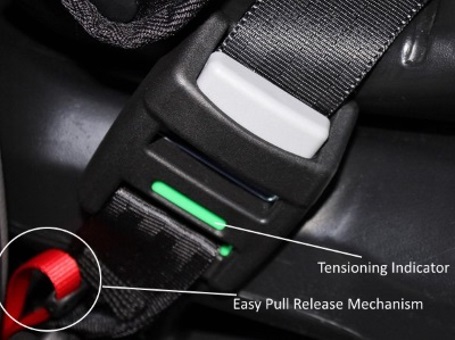
The 2013 Safety Standard introduced (in September 2014) ISOFIX (an installation method that connects your car directly to a purposely built 6mm bar located in your rear seat(between the seat back and cushion)).
ISOFIX compatible child restraints are available in Type, A & B and combination A/B only. They will have a top tether strap and must be capable of being installed using either seat belt installation or ISOFIX compatible installation.
There are two different versions of ISOFIX compatible restraints; rigid lower attachment (such as the safe n sound Trufix) and flexible lower attachment (Such as the Infa Kompressor II Luxury). Child restraints with flexible lower attachments are the most common isofix type on Aussie baby car seats; as they are cheaper to design & manufacture.
Important Note: legally you will not be able to use an overseas ISOFIX restraint here in Australia. They do no meet Australian Safety Standards.
Expect to pay a premium for ISOFIX compatible restraints as they cost more to design & manufacture.